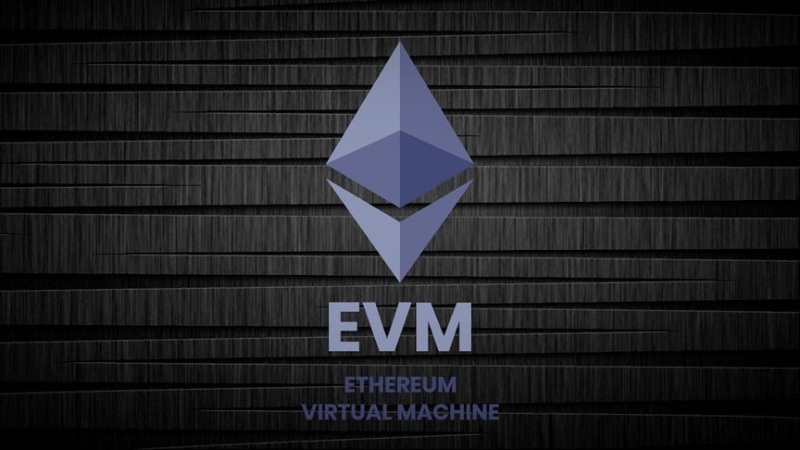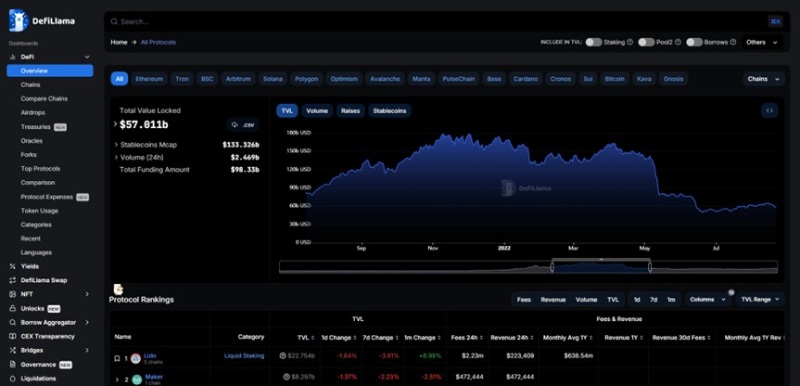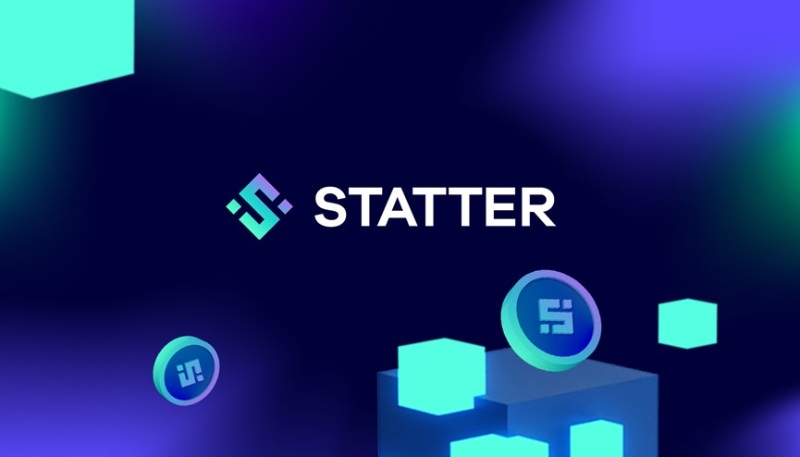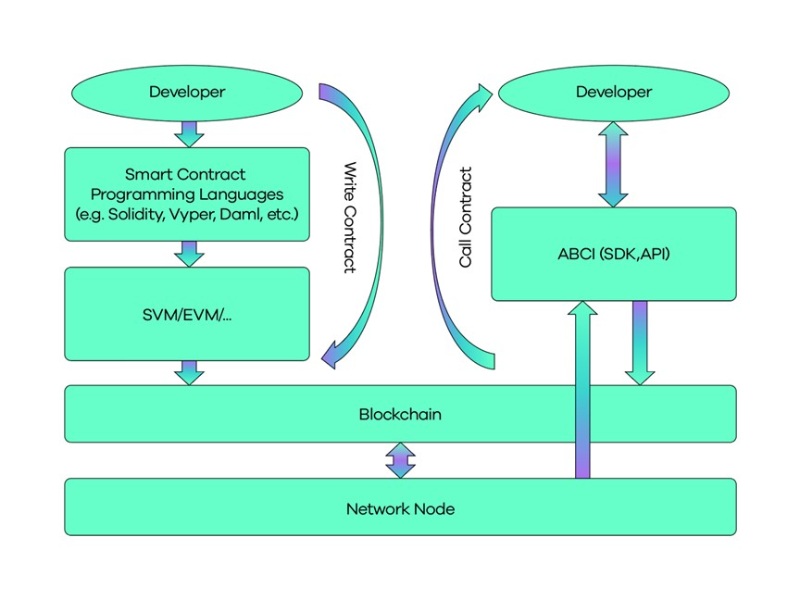West Haverstraw, New York, Ethereum, the first blockchain to fully support programmable, decentralized applications(dApps) and smart contracts. As its network effects have continued to grow, it has driven the broad adoption of smart contracts. Smart contracts, initially implemented on Ethereum, have since given birth to decentralized applications(dApps) such as Compound, MakerDAO, Uniswap, and EtherDelta. The emergence of these dApps has pioneered a new approach to financial services based entirely on blockchain infrastructure.

The Ethereum Virtual Machine(EVM), a powerful software ecosystem for implementing smart contracts on the Ethereum network, is a meticulously designed decentralized Turing-complete virtual machine and a core component of the Ethereum network. The primary task of the EVM is to process and execute smart contract transactions on the Ethereum network, ensuring their safe and efficient operation.
In the list of top ten chains ranked by Total Value Locked(TVL), over half are compatible with the Ethereum Virtual Machine(EVM). The so-called “EVM compatibility” refers to a blockchain’s ability to write and execute smart contract code and run the EVM. This characteristic allows developers to easily deploy existing smart contracts on EVM-compatible chains without the need to make any modifications to the code. Due to the ability of EVM-compatible chains to integrate with the Ethereum network, it provides a convenient platform for developers. This allows them to effortlessly develop and deploy their own decentralized applications not just on Ethereum but also on EVM-compatible networks.
As the demand for Ethereum smart contracts continues to rise, the limitations of Ethereum in terms of computational performance are becoming increasingly evident. This has led to network congestion, low execution efficiency, and soaring transaction costs. In response to such challenges, more and more dApps are beginning to deploy their smart contracts on other blockchains. Numerous infrastructures capable of multi-chain compatibility, including protocols, wallets, and DeFi applications, currently exist:
u Chainlink: As an oracle network, Chainlink has successfully connected over 1470 projects with off-chain computational resources, transmitting 42 billion on-chain data points across multiple blockchain ecosystems.
u Ledger: As a hardware encrypted wallet, Ledger offers secure private key storage facilities, supporting thousands of tokens from various distributed ledgers.
u USDC: As a stablecoin tied to the US dollar, USDC spans eight different networks, and it is issued in the form of wrapped assets on multiple Layer 2 networks.
u Beefy Finance: This decentralized financial application allows end-users to access asset yields on 16 blockchains through a unified user interface.
According to the latest statistics from Defillama, there are currently 196 active blockchains in operation, hosting thousands of smart contracts on their systems. At one point, the total value locked(TVL) in these smart contracts reached a staggering 180 billion U.S. dollars. Notably, many smart contracts have been deployed across multiple blockchains. For instance, Uniswap has deployments on various chains including Ethereum, BSC, Polygon, Moonbeam, Solana, and Arbitrum, while SushiSwap has successfully deployed on 15 different blockchains. This multi-chain deployment not only enhances the usability and scalability of smart contracts but also provides developers more choices and flexibility in deployment.

However, the smart contracts deployed on each blockchain must manage their own internal operational states and can only communicate with other smart contracts on their same chain. They cannot directly interact or combine with smart contracts on other blockchains, which limits scalability. This in effect creates an “island effect,” restricting the flow and utilization of information, data, and assets across the network, thereby inhibiting the full potential of the blockchain’s intrinsic value.
Statter is the world’s first public chain platform specifically designed to offer comprehensive services for the metaverse ecosystem. It adopts an active and compatible multi-chain strategy to dismantle data silos and build a cohesive multi-chain aggregation ecosystem. This innovative approach provides developers with a network environment allowing seamless connection of assets and services across multiple chains.

Taking EVM compatibility as an example, Statter will build a code execution environment similar to EVM. This move will allow developers on Ethereum to easily and quickly seamlessly migrate their smart contracts to the Statter chain without having to rewrite smart contract code for the Statter network.
The EVM ecosystem boasts a vast community of blockchain developers and a wealth of open-source project resources. Compatibility with EVM means that these projects can be quickly integrated into the Statter network. Statter will leverage the traffic and ecological advantages of Ethereum to achieve rapid development. Many well-known and rapidly developing public chains have already achieved EVM compatibility, like the exchange platform chain BSC, Polygon on the layer 2 track, PlatON on the privacy computing track, and Filecoin, which announced the launch of an EVM-compatible virtual machine, FVM. These public chains compatible with EVM have achieved remarkable success in ecological development. Multi-chain compatibility can take up a lot of the ecological value overflow from mainstream chains, which will powerfully propel the prosperity of the Statter ecosystem and usher it into a new stage of rapid user and ecological growth.

In Statter’s plan, compatibility with EVM will be achieved first, followed by the gradual integration and connection with other mainstream blockchains. The ultimate goal is to achieve multi-chain compatibility, transmuting and mapping transaction data from different chains so that they can seamlessly integrate into the Statter network. This will eliminate the data barriers between heterogeneous chains, providing developers and users with a barrier-free blockchain environment for more smooth and efficient value exchange and circulation.
Media Contact:-
Website:- https://statter.io/
Contact Person Name:- Steven C Medrano
Email:- [email protected]
Disclaimer: The views, suggestions, and opinions expressed here are the sole responsibility of the experts. No Smart Herald journalist was involved in the writing and production of this article.